How to paint a cultured steampunk tiger
Nick Harris reveals how to capture a unique personality with this civilised steam punk tiger tutorial.
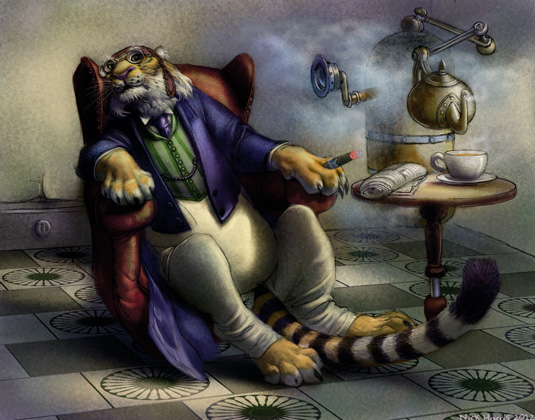
The particular rules of your chosen steampunk universe will likely dictate what sort of tiger we're talking about here. Is it anthropomorphic, mechanical or something else?
A tiger character might require designs for a suitably Victorian costume and props, while a mechanical character will need a different approach. Either way, look for reference to inform your choice.
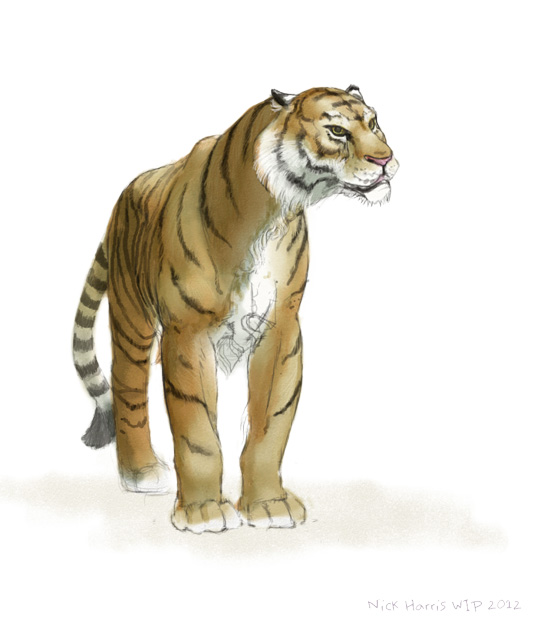
As well as searching for tiger images online, I referred to some animal anatomy books I have. The sometimes flexible nature of steampunk technology saw me broaden my search parameters to include items like leather flying helmets from the 1940s. Such eclecticism can help spark creative ideas.
I went for a living beast – clothed and educated. Consider gender variations and how they might affect design as well. Mine's male, and his attire and situation should reveal things about his personality and life. He is middle-aged, smokes cigars, does not like shoes but does like flying (hence the helmet). I plump for SketchBook Pro to tackle this.
01. Start with reality
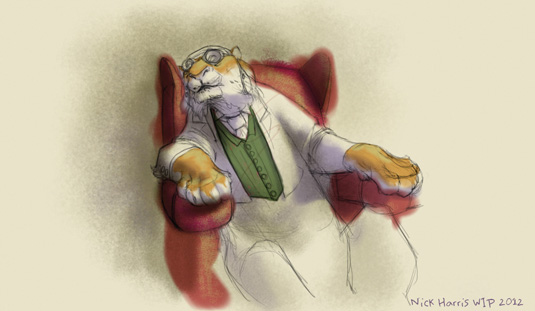
After some straight sketching of tigers to warm up, I launch SketchBook Pro and start on my character, keeping the drawing loose. I try some initial colour ideas here and there over a warm base tone. My habit is to work on numerous layers, but go with whichever work methodology suits you best.
02. Use textures
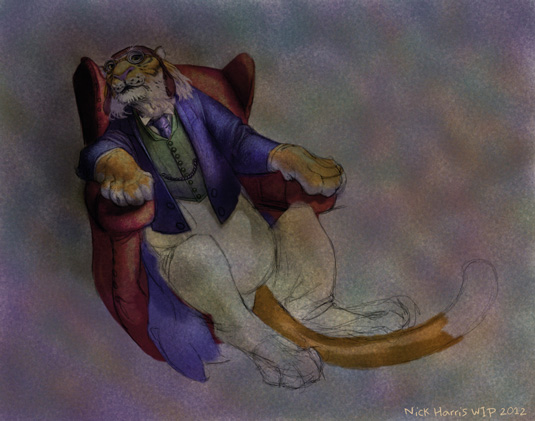
I want a mottled feel, so I paint with a textural brush using close-toned colours on a layer set to Multiply. I can work back into this with lighter colours to help describe form. I keep shadow edges soft for the most part. I've altered the dimensions to place Tiggy better. A more rigid brief might not have allowed this
03. Add detail
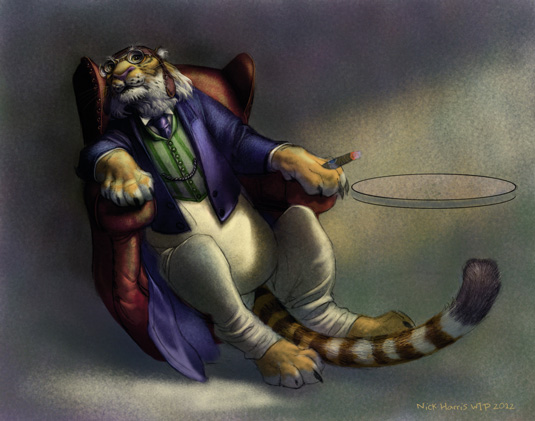
Deepening the tone and colour helps me describe form and lighting better and Tiggy emerges from the gloom. I have him wearing flying goggles, a jacket and waistcoat. Look at Victorian fashion, then take liberties and make it your own. He isn't steampunky enough yet, so I bring in more indicators – a tea urn
Daily design news, reviews, how-tos and more, as picked by the editors.
Words: Nick Harris
Nick Harris went digital in 2000 after 18 years working with traditional methods. He works mainly on children's illustrations. This article originally appeared in ImagineFX issue 8.
Like this? Read these...
- How to draw feather scales like a pro
- Free Photoshop brushes every creative must have
- Great examples of doodle art

The Creative Bloq team is made up of a group of art and design enthusiasts, and has changed and evolved since Creative Bloq began back in 2012. The current website team consists of eight full-time members of staff: Editor Georgia Coggan, Deputy Editor Rosie Hilder, Ecommerce Editor Beren Neale, Senior News Editor Daniel Piper, Editor, Digital Art and 3D Ian Dean, Tech Reviews Editor Erlingur Einarsson, Ecommerce Writer Beth Nicholls and Staff Writer Natalie Fear, as well as a roster of freelancers from around the world. The ImagineFX magazine team also pitch in, ensuring that content from leading digital art publication ImagineFX is represented on Creative Bloq.
